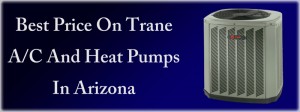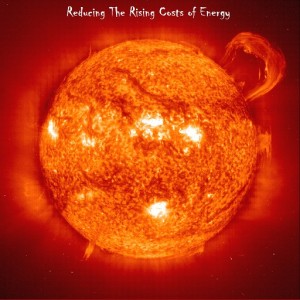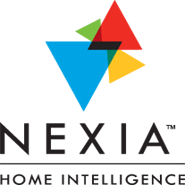Home Cooling In Arizona – How To Reduce The Load On Your Air Conditioning System
 Maintaining A Comfortable Home Against High Temperature Arizona Summers
Maintaining A Comfortable Home Against High Temperature Arizona Summers
Home cooling in Arizona means installing air conditioning equipment that is capable of dealing with sequential months wherein the average temperature exceeds 90-plus degrees. In fact, Phoenix regional homes endure a season wherein heat increase rises well above 100-degrees for up to four consecutive months. It’s the kind of circumstances that make summer comfort almost as important as survival in below zero winter temperatures.
With each passing year it seems Arizona residents are pressed into even more days of unprecedented high heat index numbers. So even though Trane HVAC and other HVAC manufacturers continue to introduce better energy-efficient heat pumps and air conditioners, the cost of staying cool keeps rising. More hours of equipment operation means greater costs for comfort. The following tips show how to reduce the load on your Arizona air conditioning system.
Home Cooling, Reducing Heat In Your Home by Reducing Solar Heat Gain
People enjoy sunshine – even when the associated heat gain prompts increased energy consumption by home air conditioning systems. Weather that enables a wonderful day at the water park also forces higher cooling bills for the homestead. Longer hours of sunshine produce greater accumulation of solar heat gain. In the Arizona summer when the sun is higher in the sky, daylight hours increase and the associated heat gain accumulates even more. So keep the heat out. Here’s how:
- Install Sunscreens – Perhaps budget conditions forbid installation of window awnings. Take a look at sunscreens as an alternative solution. Crafted from wood panels or louvered slats, sunscreens fit over windows in a manner similar to shutters.
- Install Window Awnings – Whether crafted from rigid or flexible materials, window awnings reduce the heat that transmits through the windows of Phoenix houses. Even windows facing South or North can benefit from installed window awnings.
- Overhangs – If a home is already completed, this suggestion doesn’t apply to the circumstance. However, for Arizona homeowners in the process of building, or perhaps doing some major remodeling, crafting wide overhangs will help shield windows and doors from the blistering Phoenix regional summer sunshine.
- Plant Trees – If planted at a proper distance from the home, trees offer shade and reduced inside heat gain. But some cons exist: Even quick growing trees take many years to reach a height that provides full benefits. Also, if planted too near a home, the roots of the trees can end up causing issues with the foundation.
Home Cooling, Keeping the Heat Out and Reducing Indoors Heat
 Stopping solar heat-gain involves external solutions. The second line of defense involves controlling heat gain from within the home. This means reducing indoor heat as well as keeping heat out.
Stopping solar heat-gain involves external solutions. The second line of defense involves controlling heat gain from within the home. This means reducing indoor heat as well as keeping heat out.
Keeping Heat Out Improves Home Cooling Efficiency…
- Adequate Home Insulation – To keep a cool home, install sufficient and effective insulation in the walls, the attic, and the crawlspace.
- Managed Air Flow – Close the windows and doors. Latch them. Proper home cooling demands a tightly sealed home.
- Leak Prevention – Find the gaps around the doors, windows, vents and electrical outlets. Seal them.
Reducing Indoors Heat Assures More Efficient Home Cooling…
- Scheduled Applications – Appliances emit heat, some more so than others. Use a timer to schedule the dishwasher so that it only runs during the late evening hours. Plan clothes drying for late night TV time.
- Remember the “Off” Switch – From lights to televisions, stop burning electricity on devices not in use. Even small appliances resulted in accumulated heat spots.
- Ventilate – When bathing in hot water, use exhaust fans. Likewise when cooking on the range or even when running the dishwasher.
Home Cooling, Choose the Right Air Conditioning System
Home air conditioning systems strip heat from the inside air. This means more cool for you. But not all systems function with the same efficiency. Every Arizona home is different, and requires a precise cooling configuration of equipment and installation.
Ducted force d-air systems are the most common method of controlled home cooling. However, many components define the effectiveness of the installed A/C unit. Product selection based upon SEER ratings may seem simple and straightforward, yet the path to energy-efficient home comfort is often clouded by an assortment of additional calculations and considerations.
d-air systems are the most common method of controlled home cooling. However, many components define the effectiveness of the installed A/C unit. Product selection based upon SEER ratings may seem simple and straightforward, yet the path to energy-efficient home comfort is often clouded by an assortment of additional calculations and considerations.
American Cooling and Heating offers Arizona residents the finest home cooling resources available to the region. Competitive HVAC product and installation prices form the core attraction, but our 100% workmanship guarantee is what ensures that your home cooling equipment functions at a true Energy Star efficiency rating. From energy-efficient heat pumps, to central air conditioning units, ACH supports the full line of Trane home cooling equipment.
For more information, call now.





